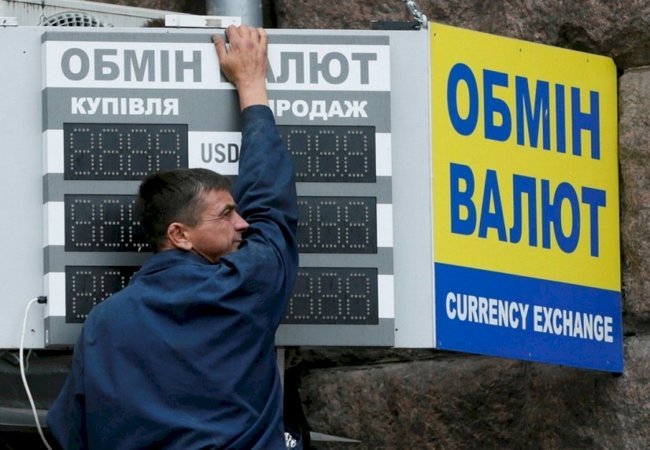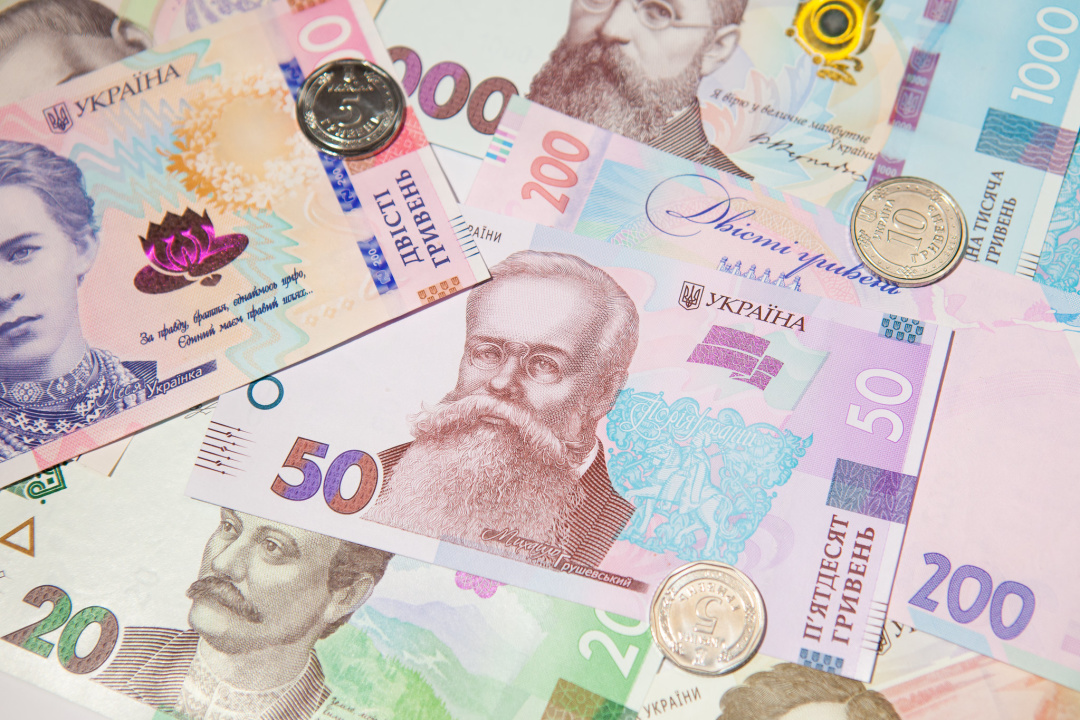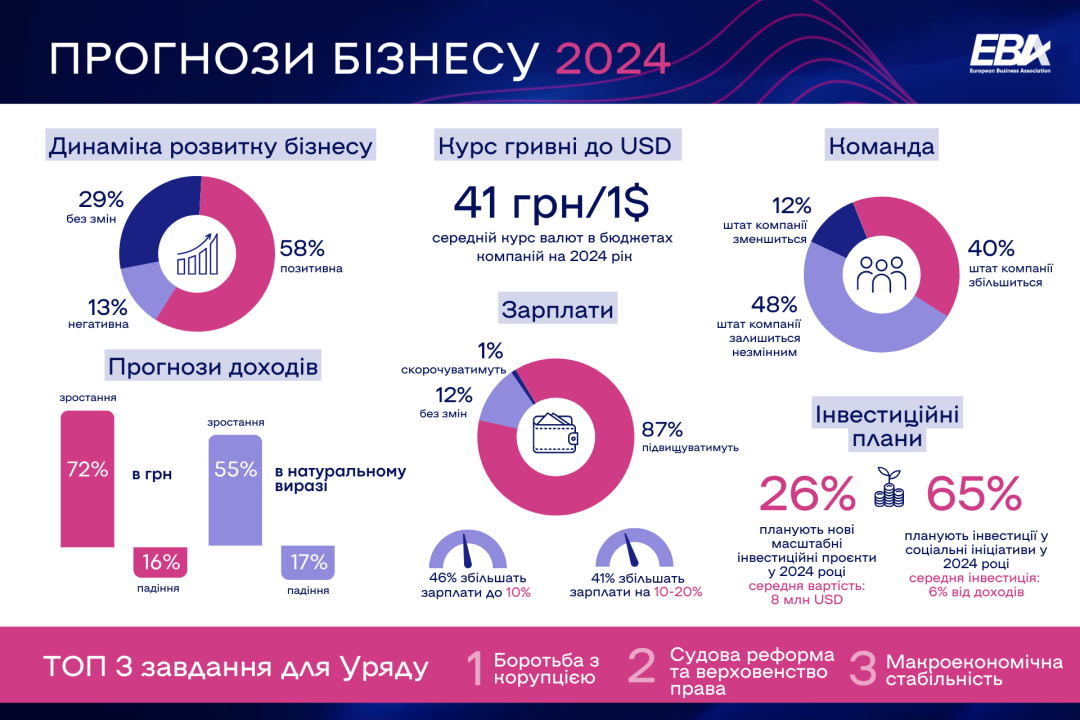
No serious challenges to hryvnia on foreign exchange market
Ukraine's international reserves decreased for the first time in six months: they amounted to $40.387 billion in early September, having decreased by $1.331 billion (-3.2%) in August. This was due to an increase by at least a quarter of the NBU's interventions in the interbank foreign exchange market. The regulator tried to restrain the devaluation of the hryvnia against the euro and the U.S. dollar, which resumed in July after a long period of the strengthening of the national currency – mainly due to additional problems with Ukrainian exports after Russia's withdrawal from the Black Sea grain export deal. At the same time, forecasts were made that a sharp devaluation of the hryvnia was inevitable. However, this did not happen: thanks to the actions of the National Bank of Ukraine, the quick reaction of exporters, stable filling of the budget at the expense of internal resources and (primarily) large amounts of financial assistance from international partners, a sharp devaluation of the Ukrainian currency was avoided. Compared to mid-July, the dollar exchange rate rose by less than a hryvnia. But are there risks of a new devaluation cycle?

WHAT INFLUENCED THE EXCHANGE RATE IN LATE SUMMER AND EARLY AUTUMN?
Another period of weakening of the hryvnia began in mid-July, when Russia refused to extend the grain export deal. Moreover, then the aggressor increased the intensity of attacks on Ukrainian ports and began to methodically destroy Ukraine's port infrastructure on the Danube. Accordingly, revenues from the sale of agricultural products abroad (the main item of Ukrainian exports during the war) sharply decreased. However, supplies decreased even before that. Since March, Russia had been slowing the movement of vessels as part of the Black Sea Grain Initiative, particularly by delaying joint inspections of cargo.
The exchange rate reached its peak on August 23-24: the dollar purchase rate was UAH 38.35, and the sale rate was UAH 38.6 (vs. 37.11-37.19 a week earlier). After that, the reverse process began: on September 4, the hryvnia strengthened to UAH 37.68-37.83 per U.S. dollar.
Over the past week, the national currency has again weakened. The exchange rate on September 13 was UAH 38.02-38.15. That is, in fact, the fluctuations are insignificant. In addition, experts do not see any reason that the devaluation of the hryvnia may speed up.
Moreover, some say about the potential for the return of the national currency to the range of UAH 37.60-38.00 per U.S. dollar. After all, economists explain the exchange rate changes in August not so much by the already mentioned decrease in export revenues, but by the fact that it happened amid lower levels of international financial aid to Ukraine compared to previous months. In August, the country received $1.633 billion from partners (mostly macro-financial aid from the EU). Some $22 million came from the placement of foreign currency bonds. At the same time, Ukraine spent $686 million to repay and service public debt in foreign currency.
Over the same time, the NBU's net interbank interventions (sale of foreign currency from reserves minus its acquisition) amounted to $2.449 billion. Therefore, after the record July figure, Ukraine's gold and foreign currency reserves decreased. But they still remain at a fairly high level, having increased by $11.893 billion since the beginning of the year. This is quite enough to support the fixed exchange rate and stabilize currency expectations in the short term, experts say. Judge for yourself: according to the NBU, international reserves are currently equivalent to 5.4 months of imports with the recommended minimum being 3 months. At the beginning of the year, this figure was 3.7 months.
The level of own revenues in August generally corresponded to estimated indicators: the plan for tax revenues (UAH 83 billion) was somewhat over-fulfilled, but in terms of customs revenues (UAH 42.5 billion) there was approximately a five percent shortfall. Thanks to the placement of military bonds, it was possible to attract UAH 27 billion to the budget. In general, experts estimate internal resources received in August to be worth over UAH 153 billion.
As for export indicators, which usually significantly affect the situation on the foreign exchange market, in July, when the aggressor state refused to extend the grain deal and intensified missile and drone strikes on the Ukrainian port infrastructure on the Danube, they really declined significantly. However, the situation gradually began to improve. Ukrainian farmers, traders and transporters have adapted to the next complication of grain transportation conditions, Hlib Vyshlinskyi, executive director of the Center for Economic Strategy, said in a comment to Ukrinform.
"Despite the permanent difficulties of wartime and new challenges, the pace of exports is more or less stable. Immediately after the grain deal expired, there was a certain decrease in indicators. But then, despite active Shahed drone attacks on the Ukrainian Danube infrastructure, supplies via this alternative sea route remained quite high. And the results of the first two months of the new marketing season (July and August) were better than last year," the expert said.
According to official data, during this time, Ukraine exported 4.52 million tonnes of grain and leguminous crops (+14.1% compared to the 2022/2023 season). The supply of wheat increased by almost 75%. The export of flour also increased significantly, with 24,000 tonnes sold to foreign consumers. And this is twice as much as in July-August last year. However, there is also a negative side: due to the decrease in world grain prices, the foreign exchange earnings of Ukrainian exporters were lower, which added to the turbulence in the foreign exchange market, which the NBU had to calm down through currency interventions.

FUTURE RISKS FOR HRYVNIA AND EXCHANGE FORECASTS
Vyshlinskyi is convinced that there will be no significant fluctuations in the foreign exchange market by the end of the year. "As long as we have a sufficient amount of financial support for Ukraine from international partners, the exchange rate will be stable. For example, in September, the amount of such assistance compared to August is expected to increase. Theoretically, some risks may arise next year in case of lack of sufficient external funding - in particular, grant support from the United States," the economist explained.
So far, he does not predict a quick "eating up" of international reserves. He adds that, despite the NBU's six-month record interventions in August, over the last week the regulator has again reduced the sale of foreign currency, while the hryvnia has not weakened at all. Therefore, according to his conclusions, there are no grounds for talking about the need to change the official exchange rate.
Indirect evidence that the regulator is confident in its own strength and ability to continue to successfully control fluctuations in the currency market is another relaxation of the restrictions introduced immediately after the start of large-scale Russian aggression. On August 29, as part of the first stage of the return to the pre-war monetary policy (floating exchange rate and inflation targeting), the NBU made another easing of currency rules for the population.
For the first time since the beginning of the war, Ukrainians were given the opportunity to buy non-cash currency online without additional conditions, but within the monthly limit: the purchase of up to UAH 50,000 in non-cash currency per month in one bank is allowed without confirming the basis/obligation for such a transaction.
Also, the monthly limit for the purchase of non-cash currency in one bank for its subsequent placement on a term deposit (from 3 months) has been increased from UAH 100,000 to UAH 200,000. "If the option to buy currency on deposit is now in less demand than in the second half of last year and at the beginning of this year, then the possibility of buying non-cash currency without confirmation of permission for such a transaction, including the ability to do it online through the banking application, is an important step forward on the way to the easing of currency restrictions and the further convergence of cash, non-cash and official exchange rates," said Danylo Hetmantsev, head of the parliamentary committee on finance, tax and customs policy.
Most banks have restored the possibility of buying non-cash currency online for their customers since August 30. This immediately led to a small (1-1.5%) strengthening of the hryvnia cash rate.
"In general, the decision should ease the seasonal pressure on the hryvnia in the cash market. According to an NBU press release, the changes will contribute to the reorientation of part of the demand for foreign currency from the cash market to the non-cash market, where transactions are more convenient and secure. Accordingly, this will serve as an additional safeguard against speculative widening of the spread between the official and cash rates. Together with strict disciplinary measures (cancellation of licenses) against two networks of exchange offices, I believe that the NBU has chosen the right time for such changes that will maintain stability in the foreign exchange market," Hetmantsev concluded.
At the same time, the government seems to be counting on a certain weakening of the national currency. After all, its strengthening this year leads to budget shortfalls and a decrease in exporters' profits. For example, as can be seen from August budget revenues, Ukraine received almost UAH 2.5 billion less than planned from the work of customs. This shortage is explained, first of all, by the strengthening of the hryvnia exchange rate compared to the indicators of the macroeconomic forecast of the Ministry of Economy, on the basis of which the 2023 state budget was formed.
"We are worried about the strengthening of the hryvnia... For the next year, we foresee an exchange rate of UAH 41.40 per dollar," Finance Minister Serhiy Marchenko said at a meeting with the European Business Association. At the same time, he referred to the forecast of the Ministry of Economy regarding the average annual exchange rate of the hryvnia to the dollar for the year 2024, which was approved (not yet officially published) at the end of August as part of the budget process. The government official explained to journalists that the strengthening of the national currency, which was recorded this year, "is a disadvantage for export-oriented businesses and for the country's economy in general." At the same time, Marchenko is also against a sharp devaluation of the hryvnia.
How will the regulator act? As a reminder, the NBU has been keeping the official exchange rate at UAH 36.60 per U.S. dollar for more than a year. At the same time, the current forecast of the Ministry of Economy for the current year (taken into account during the preparation of the 2023 budget) is UAH 42.20. By the end of the year, according to this forecast, the exchange rate should fall to UAH 45.80, which will likely not happen. Accordingly, those revenues to the budget that depend on exchange rates will be smaller.
"Of course, in the current situation, when external payments in foreign currency are relatively low (Ukraine mainly pays for previous loans from the IMF), the Ministry of Finance is interested in the exchange rate being higher. After all, thanks to the customs clearance of imports, there will be additional revenues that can be spent on the army. But this contradicts the goals of the National Bank. After all, its goal is to suppress price growth. This coincides with the public interest in preserving the real income of citizens. So it is necessary to find a balance between these interests. But now I would not talk about the fact that the country really needs devaluation. I think that if there are systemic distortions in the dynamics of trade, the trade deficit will grow, the regulator will react appropriately," Vyshlinskyi said.
The Economy Ministry's currency forecast, according to him, is a more political than an economic indicator in order to calculate future budget revenues in view of expected needs. "On the one hand, its official release will be discussed in the media, but it will have no real impact on the situation. And the market will not react to it. After all, none of such exchange rate forecasts have come true in recent years," the economist concluded.

As for business estimates, according to the EBA survey, in their budgets for 2024, company managers set the value of the currency at an average of UAH 41 per U.S. dollar. This year this indicator was higher: UAH 43 per dollar. That is, the business believes that the hryvnia will depreciate, but not significantly.
Vladyslav Obukh, Kyiv




